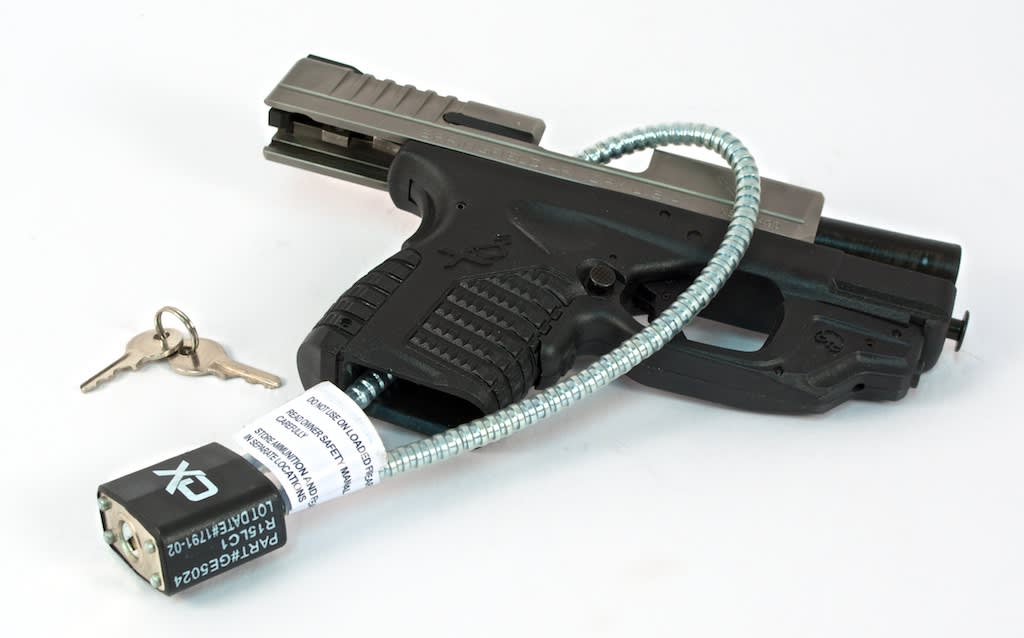The Seven Deadly Sins of Concealed Carry: Not Carrying When You’re Not Carrying
Tom McHale 01.03.14

Not carrying when you’re not carrying? Huh?
Maybe I had too much holiday egg nog, but let me try to explain. When you carry a gun, it’s under your complete and absolute control at all times. That’s part of the definition of carrying—it’s on your person. When you’re not carrying your gun, you need to figure out ways to secure it that are safe and secure as when you are carrying. One story about a child accessing an improperly stored gun at home is one too many, especially when prevention is so inexpensive and easy.
So how can you develop the same level of “control” over your firearm when you’re not carrying?
First, let’s define “security” in this context. For now, we won’t talk about ways of preventing your gun from being stolen from your home. Gun safes are great for that, but that’s a whole different discussion. We’ll focus on “securing” your gun from unauthorized use by children or guests while it’s not in your immediate possession. The most common gun security scenario is getting home and going to bed. Most folks probably aren’t using an inside-the-waistband retention holster in their jammies, so they need to figure out a way to safely store their gun at home. Let’s look at a couple of home security options.
The cheap and easy method
Since 2005, as part of the Protection of Lawful Commerce in Arms act, every new gun manufactured or imported for civilian sale must include a safety lock. Usually these locks are some combination of padlock and cable that are designed to prevent operation of the gun action, thereby rendering it incapable of firing. If you already own a gun, or bought a used one, you can still easily get a safety lock, usually for free. The National Shooting Sports Foundation’s Project ChildSafe program provides free locks and many gun stores will give you a free trigger lock if you ask.

These work just fine, but the downside is that you have to unload your gun before locking. It will not be quickly available to you in the event of emergency. Of course, you will also need to reload your gun each day when you’re ready to resume carrying. For a recreational gun that sees occasional use, this can be a great solution. For a concealed carry gun that gets used daily, it’s not as workable. All the hassle of unloading, locking, unlocking, and reloading invites unnecessary gun handling increases the chance that you won’t use it each and every time your gun leaves your immediate possession. For a concealed carry gun, you may want to consider spending a few dollars on a system the prevents unauthorized use, yet allows you and other designated users quick access.
Quick-access safes and security systems
The purpose of quick-access safes is to allow safe storage of a loaded and ready gun. It’s secure from curious hands, yet nearly immediately accessible to you. These are excellent solutions for concealed carry. When you get home, simply place the gun, as is, in the safe device. Depending on the model you choose, you can even insert your gun while it’s still in the holster. After all, the less administrative handling of a loaded gun, the better.
As I wrote about in my book, The Insanely Practical Guide to Gun Holsters, GunVault makes outstanding quick-access gun security systems. Like anything else, you get what you pay for. YouTube commandos have found that many budget quick-access safe models can be opened far too easily with a squeeze, shake, or prod in just the right place. Don’t risk it—quality systems like the GunVault are affordable and proven.
For a concealed carry gun, the models that I favor are the MiniVault and MultiVault. These feature a spring-loaded front access door, and both safes are roughly comparable in size to an oversized shoe box. You can choose between a fingerprint scanner and/or tactile finger pad combination lock. The intent of both locking systems is to allow quick and silent access, in the dark, with no need to see a rotary or digital combination lock. I like these models because they are large enough to accommodate a holstered gun and spare magazines. Other models are available including drawer vaults and vertical access desk mounts.
Whichever option you choose, be sure to observe these two practices:
- Use the security device of your choice every single time your gun comes off your body. It should only know two conditions—concealed carry on your body and under your direct control and snug and cozy in your preferred security device.
- If you go with a quick access security system like the GunVault, practice opening and closing it without looking every day. If you observe the first rule, this will be somewhat automatic as you’ll be storing and removing your gun frequently. Just open the lock without looking, so in the event you ever need to access your firearm in the middle of the night, you’ll be well practiced.
Please, be a safe gun owner and develop your own ways to achieve the control and safety of carrying, even when you’re not.

